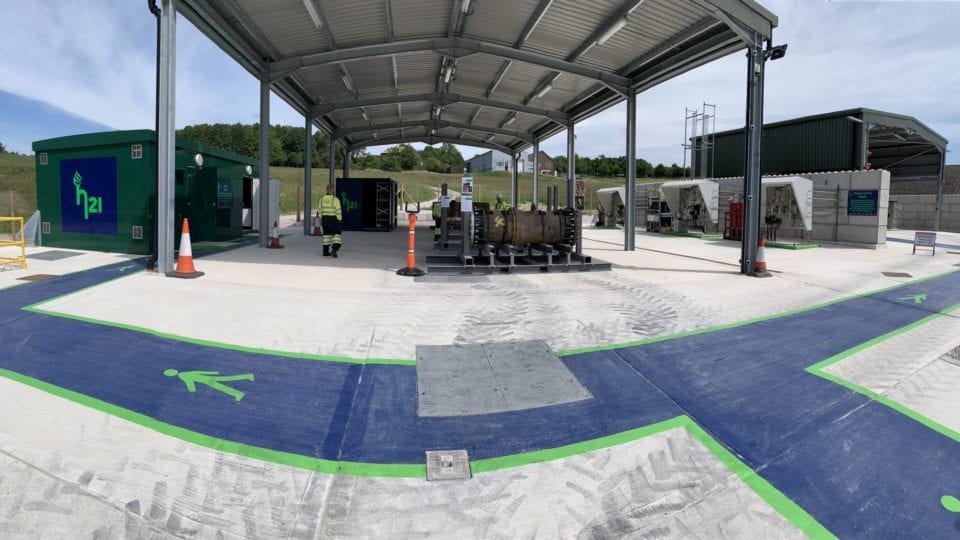Ofgem backs H21 hydrogen project with £6.8m grant
H21, the programme from the UK gas industry to work towards converting the network to carry 100% hydrogen, has been awarded £6.8m in Ofgem innovation funding to support a second phase of research and development.
2nd December 2019 by Networks

Part of the funding will pay for tests of operational and maintenance procedures on the gas network, paving the way for live network trials at a later date.
H21 is led by Northern Gas Networks, in collaboration with Cadent, Wales and West Utilities and Scottish Gas Networks, with new project partners National Grid Gas Transmission.
The industry-led project is establishing the safety evidence needed to prove that a hydrogen network is a viable alternative to today’s natural gas network serving UK homes and businesses.
The project runs alongside the government funded, Arup-run £25m Hy4Heat programme, which is mainly addressing buildings and appliances.
The second phase of the H21 project will begin in January 2020, where the project team will be augmented by new members: Leeds Beckett University, DNV GL, a Norwegian safety and sustainability consultancy, and HSE Bespoke Research and Consultancy, part of the Health and Safety Executive.
Together, the project partners have contributed a further £750, 000, creating a total project pot of £7.5 m to further develop the evidence base.
H21 Phase One received £9m from Ofgem in 2017, and focused on leakage testing of network assets, and looking at the consequences of different leakage scenarios.
Testing took place at a purpose-built facility at the HSE Science and Research Centre in Buxton, and on specialist rigs at DNV GL’s base in Spadeadam, Cumbria.
The RAF Spadeadam side is used by DNV GL for industrial hazard testing, including tests on fire pipelines, with the remoteness of the area being key to its operations.
This stage will complete in January, with a full report delivered in Summer 2020.
Phase Two will involve simulating network operations on a specially constructed network, also at DNV GL’s base in Spadeadam.
Additionally, there will be network research trials on an unoccupied test site, to demonstrate operational and maintenance procedures.
A combined qualitative risk assessment will bring together findings from both H21’s network testing and findings from the Hy4Heat programme, currently exploring hydrogen’s use in buildings and appliances.
Phase Two will also build upon customer research carried out in H21 Phase One, working with social science teams from Leeds Beckett University to further understand public perceptions of hydrogen.
The project is also developing resources to enable consumers to make informed choices on their future energy.
Mark Horsley, chief executive of Northern Gas Networks, said: “The research being carried out under the H21 NIC is essential for enabling the UK to move towards a greener future.
“We’re delighted that our regulator recognises the importance of the evidence being delivered, and to be undertaking phase two of this ground-breaking project on behalf of the industry.
“We firmly believe repurposing the network to carry 100% hydrogen would represent a huge step forward towards meeting the UK’s sustainability targets, as well as having a crucial role to play in satisfying customer expectations for a cost-effective and minimal impact transition to lower carbon energy.
“Our research, along with government data exploring the use of hydrogen in buildings and appliances, will not only enable policymakers to progress a policy decision on hydrogen, but will also bring customers along on the journey. Their understanding is absolutely central to acceptance of this technology.”
Phil Sheppard, director of gas transmission, National Grid: “The second phase of H21 represents a major step forward in realising a decarbonised gas future.
“National Grid Gas Transmission is pleased to be joining our distribution colleagues in the consortium.”
Comments
Login on register to comment
Related content

Gas
Cadent backs launch of major bio-CNG HGV refuelling station
Gas network’s £250,000 infrastructure investment ensures supplies to existing connected customers have not been impacted

Gas
Editor’s blog: The biggest tests of resilience are yet to come
Network content director Jane Gray reflects on the industry's coronavirus response to date and the challenges still to come.

Gas
From the front line: Chris Garside and Andy Simcoe, Northern Gas Networks
Key workers across the power and gas networks are playing a critical role in the national response to Coronavirus. Network has committed to profiling their stories.
Related supplier content
![‘Learning by doing’ on the road to net zero [test product]](https://networksonline.s3.amazonaws.com/products/images/3.jpg)
People & Skills
‘Learning by doing’ on the road to net zero [test product]
DSO director Andrew Roper discusses 'Learning by doing'

Power
Load patterns and lockdown: how Covid-19 is impacting electricity networks
Insights into dynamics on the low voltage network as the outbreak unfolds

Downloads
Protect electrical equipment from insulation failure
Insulation faults are a major cause leading to the eventual failure of electrical equipment. Partial discharge (PD) is a very reliable indicator of developing insulation faults. Regular PD testing allows users to detect and analyze PD activity